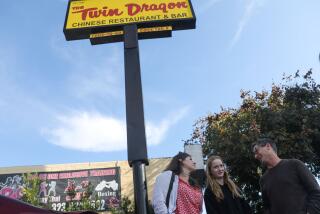Today’s Agenda
- Share via
Making a life in a new land is never easy, but for many immigrants the holiday season is especially stressful. The absense of family, familiar surroundings and native Traditions during holidays like Christmas only aggravates feelings of homesickness, according to people new to Southern California who described their customs for Voices.
According to cultural anthropologist Nancy Jabbra, an associate professor and director of Women’s Studies at Loyola Marymount University, immigrants bring with them memories of what they used to do at home. But it’s not always easy to maintain old traditions, she says.
“Sooner or later you get influenced by what’s happening” in the new homeland.
That can work both ways. For instance, many pagan customs--including Christmas trees and mistletoe--have become part of the American Christmas tradition and most of us don’t know their origins, says Jabbra.
“I did research in Lebanon some years ago in a Christian community. Christmas was more of a religious holiday. People went to midnight Mass and the next day there would be a big family dinner, but one could see some Western customs creeping in. Shops were often decorated with colored lights and you’d see trees here and there. And some people would put up trees in their house and next to it would be the Nativity scene, which in the Middle East is a cave, not the little wooden structures that Americans think of.”
Roman Czarny, vice consul of the Consulate-General of Poland, who has been in Los Angeles for 2 1/2 years, says that in his country shopping sprees are becoming common at Christmastime.
“It’s more or less similar in Poland, although not to the extent that it is in America because we’re not exactly as affluent,” he says.
Czarny says Christmas is the most family-oriented holiday in Poland. “We have nothing like Thanksgiving, so this would be the time when the family would get together and all possible relatives.”
But Christmas Eve, not Christmas Day, is the most important day in Poland, Czarny says.
“That’s when we break the oplatka, which is like the wafer in Communion. And we wish one anther Merry Christmas and all the best. Traditionally, the meal should start when the first star shows up in the sky--just like the star of Bethlehem. It usually doesn’t. But traditionally it should be like that. You should have hay under the tablecloth, again following the Bethlehem tradition. And you should always leave one chair empty for the unexpected guest, as well as the plate, forks and knives; that again is quite biblical. There should be at least 11 different courses, but that varies.”
And what about spending the Christmas holidays here?
“We’re invited to all sorts of oplatkas, “ Czarny says. Usually they start “two or three weeks before Christmas in different Polish-American communities and organizations.”
But he does get homesick. “There are always friends here, but we do miss our relatives. And at Christmas time in Poland, unlike in California, obviously, you usually have a white Christmas.”
More to Read
Sign up for Essential California
The most important California stories and recommendations in your inbox every morning.
You may occasionally receive promotional content from the Los Angeles Times.













